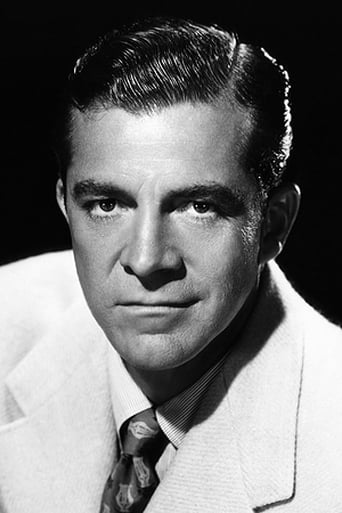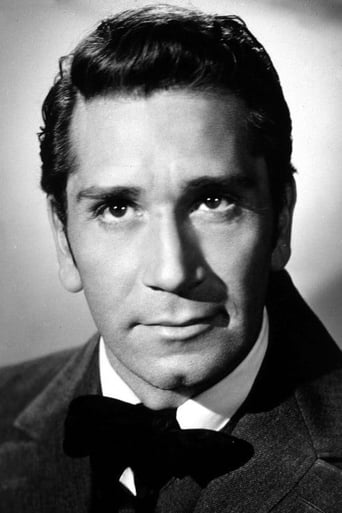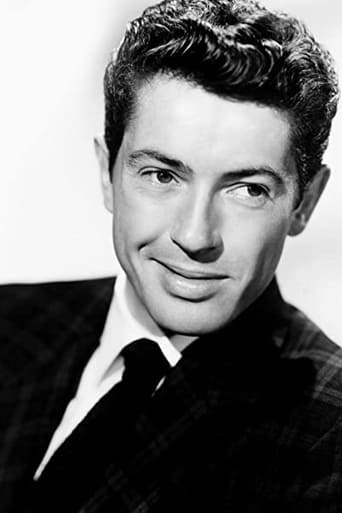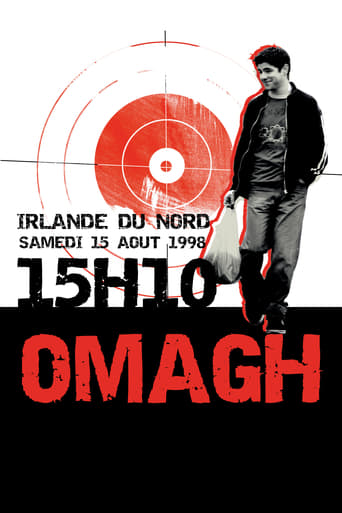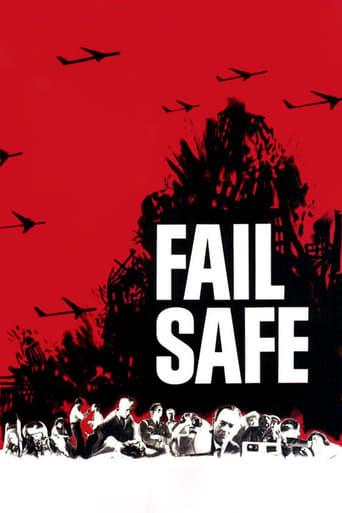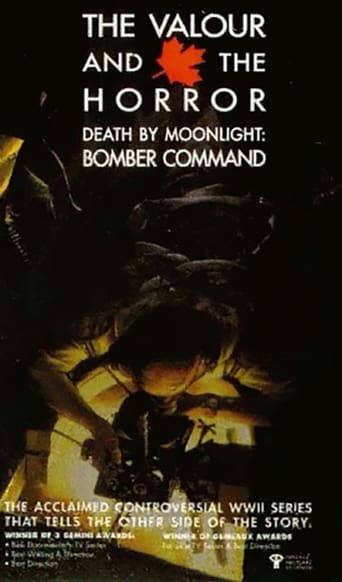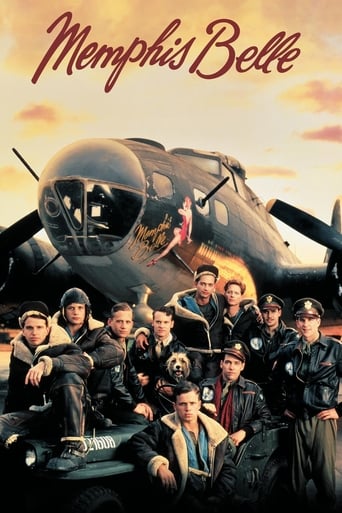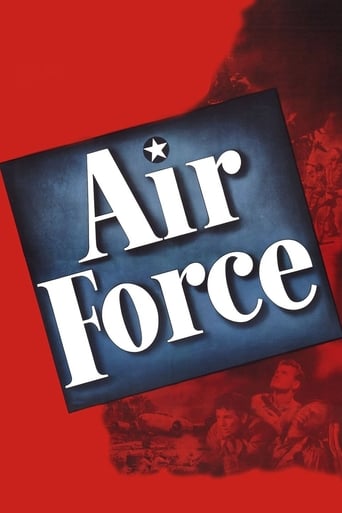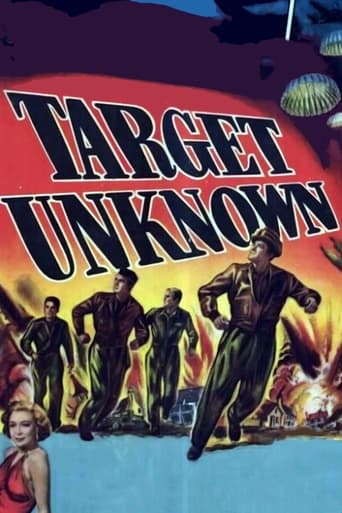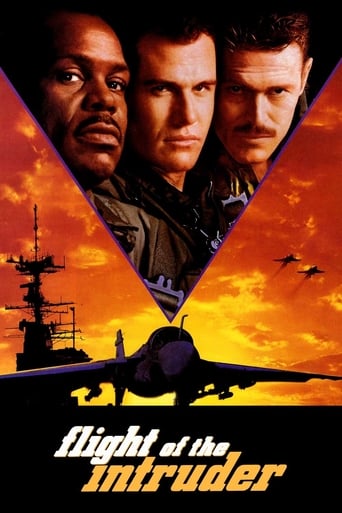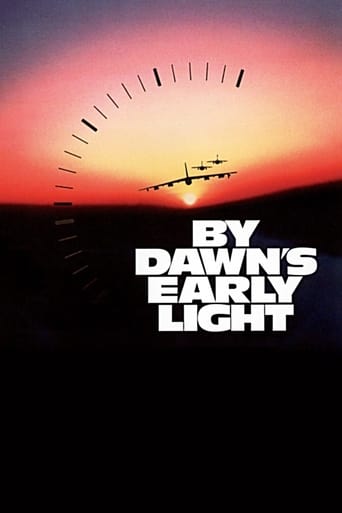
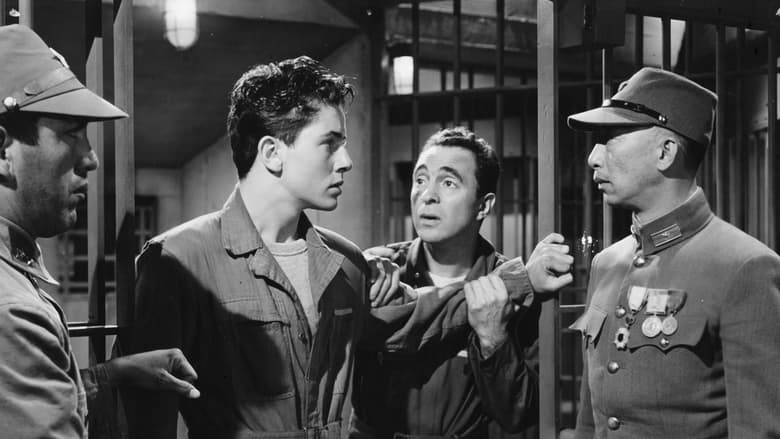
The Purple Heart (1944)
This is the story of the crew of a downed bomber, captured after a run over Tokyo, early in the war. Relates the hardships the men endure while in captivity, and their final humiliation: being tried and convicted as war criminals.
Watch Trailer
Cast
Similar titles
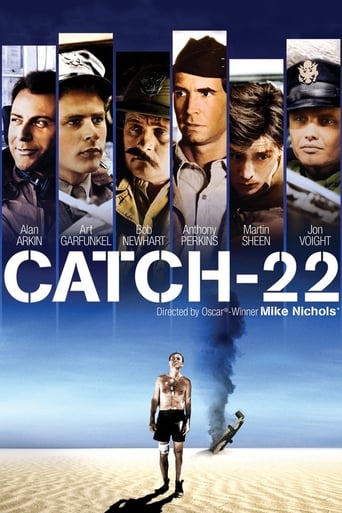
Reviews
I think this is a new genre that they're all sort of working their way through it and haven't got all the kinks worked out yet but it's a genre that works for me.
The Worst Film Ever
There's no way I can possibly love it entirely but I just think its ridiculously bad, but enjoyable at the same time.
This film is so real. It treats its characters with so much care and sensitivity.
Eight American crewmen, bailed out in China after Jimmy Doolittle's 1942 bombing raid on Tokyo, were captured and put on trial in Shanghai by the Japanese. The Japanese, attempting to exploit the capture for all it was worth, falsely charged the men with war crimes. Hypocritically – ignoring their own major war atrocities – they claimed that the Americans had bombed civilian targets and killed children. So they would stand trial as war criminals. Nevertheless, in their mercy, the Japanese would "forgive" the "crimes" if only the Americans would acknowledge them and also provide military information (the origin of the flights). So we have our story, which is a courtroom drama and not an action flick.The setting is really a kangaroo court. The judges are prejudicial and the court-appointed counsel is worthless. We know that the Japanese will treat the airmen very badly and will not follow the Geneva Convention. They never signed the accords anyway. When Corregidor falls to the Japanese, the reaction of the foreign diplomats is not surprising. For instance, the Germans are ecstatic ... the Russians ambivalent (neutral in the Pacific War at the time) ... the Swiss can do nothing. The Japanese military types flash their swords in a mock-ceremonial dance. There are other strange scenes. For one, a man of China kills his own father. Another is the suicide of a Japanese general that occurs in court without pandemonium.Near the end the POWs are offered a little leniency by Japanese general Ito Mitsubi (Richard Loo), if only they will admit that they did fly off a US air carrier (The Hornet). Mitsubi hopes to save face. So each airman agrees to place his aviator wing pins individually into a vase. If even one pair of wings is broken the group will accept Mitsubi's offer. The judges play along, wing pair by wing pair. Is there just one pair of broken wings in the vase? Great acting all-around: Dana Andrews (Captain Harvey Ross), Richard Conte (Lt. Angelo Canelli), Farley Granger (Sgt. Howard Clinton), Kevin O'Shea (Sgt. Jan Skvoznik), etc. Richard Loo always played a Japanese officer with emotion and effectiveness. In more than one WWII movie he is the one who answers the complaints of Japanese subjects, "What do you expect? You're a conquered people!" Yes, the film is outdated, but it is also intriguing, inspiring, and absorbing. And what could be a more fitting ending than the US Air Force Song!
I am going to do something I don't normally do. I am going to give this film two ratings as the quality and effectiveness of the film varies over time.For 1944 when this film came out, I'd give it a 9. It was an amazingly effective propaganda piece and must have done a lot at home to encourage the war effort. While there are some over the top scenes, the overall effect is a film that encourages patriotism and actually is more accurate in portraying the enemy than the typical war film of the era. I can easily imagine audiences of the time seeing this film and either enlisting or at least doing their best for the war effort after seeing THE PURPLE HEART.For 2008, this film is an interesting curio but you can clearly see that a few overly sentimental and over the top scenes do a lot to lessen its impact and convince audiences that the film isn't true--even though it mostly is! Individual details are far-fetched (such as the assassination scene and the Japanese soldiers dancing about and sword fighting like mad dogs) but this trial and the torture of the captured American fliers did actually occur following the Doolittle Raid.The biggest pluses in the film are the acting by most of the American crew members--particularly the fine effort by the always professional Dana Andrews--though the rest of the guys also were very effective. The biggest minus was that occasionally the film is a bit sticky with such obvious and over the top messages--it sure ain't subtle! Seeing this film remade today (and including the actual disposition of the men--which wasn't known in 1944) would make for an interesting film and would justify a remake.
1944 WWII propaganda movie about the fliers who were captured after the Doolittle Raid on Tokyo Japan on April 18, 1942. Of the 80 US fliers involved 71 including Gen. Doolittle made it to safety and of the eight that were captured by the Japanese; three not all eight like in the movie "The Purple Heart" were executed. Ridiculously played out in a Shang-Hai courtroom with the captured US fliers having the run of the courtroom. Breaking out with bombastic and patriotic laden speeches as the almost befuddled Japanese justices and military men stand open-mouth and stunned. Making it look like that they were so impressed by the Americans eloquent oratory that they were left completely speechless. I doubt that this was in real life but in the movie the American fliers represent almost every nationality, with the exception of a black and Hispanic,that you can find. Understandingly back in 1944 the movie had to overdo the goodness of the captured US fliers and at the same time dehumanize the evil and treacherous "Japs", but was so outrageous that watching it now the movie almost made the "Japs" look good at the expense of the captured and heroic Americans. There was also a scene in the movie where it supported the killing of one's father by a son in favor of strangers, the Americans, who testified against them. This was like the movies made in the 1950's like "My Son John" were it was encouraged for parents to turn over their sons and daughters to the police or FBI if they suspected that they were communists. Even if they were not a threat to the countries security but only talked about how great it, communism, was. One scene that seemed to be completely overlooked in the movie that the film makers put in trying to show how insane the Japanese were and how normal and feeling the Americans were was the comparison between Japanese Gen. Mitsubi, Richard Loo, and the US. Gen. MacAthur. Gen. Mitsubi shoots himself when he can't get the US fliers to admit that they came from the aircraft carrier Hornet, which they did, because he felt that he fell down on his job. This without getting anybody under his command killed or wounded. All Gen. Mitsubi wanted was to make a point and the general is made in the movie to look like a crazed lunatic. Earlier in the movie when it's reported that Corrigador fell to the Japanese and that Gen. MacAthur fled and left his troops behind the captured US fliers acted as if Gen. MacAthur did a great and heroic act. As pilot Capt. Ross, Dana Andrews, remarked:"The General did what he had to do and we'll do what we have to do" which was saying nothing to their Japanese captors about where they came from, the Hornet,and getting executed! Now that's whats meant by rank has it's privileges.The Japanese judges tried very hard to prove that the Americans bombed Japanese civilian targets, and as far as I know about the Doolittle Raid they didn't, to make the US look bad to the world and trumped up evidence to make it look that way.In reality when we look back at the massive B29 fire-bombing attacks on Japan it should have been an open and shut case for them without making up the facts. Hundreds of thousands of innocent Japanese were killed in fire bombing of Japanese cities that had nothing to do with the Japanese war effort but everything to do with terrorizing the Japanese population. An action that was condemned by the Nuremberg War Crime Tribune as a major war crime and had hundreds of German and Japanese officials who were convicted of it executed or jailed for life. Also the atomic attacks on Japan in August 1945 with the bombing of Hiroshima and Nagagsaki are now believed to have been totally uncalled for. Since we know now that Japan was secretly trying to surrender to the allies at the time and that even Gen. MacAthur and Gen. Eisenhower were against using them on Japan. It now turns out that the dropping of the atomic bombs was a political not military decision, to impress USSR dictator Joseph Stalin, by the then US President Harry S.Truman.
More of the same propaganda junk from the glorious war years. These fabulous flyboys weren't about to let the nasty Nips break them. They were loyal! They were men! They were AMERICANS!! You gotta love the ending when even the 2 braindead flyers sternly and gallantly marched to the firing squad amid a rousing rendition of "Into the Wild Blue Yonder". This is the kind of bilge designed to load up the foxholes with patriotic lunkheads ready to give their all for the good ol' red, white, and blue. Unfortunately, by the time they discover in the real world that it was only a movie it's way too late to go home. Buy, hey, it was a fun movie and worth seeing.
